This morning a travel article popped into my facebook thread which had the juices of anticipation flowing – it was Lonely Planet’s Ultimate Eat List (the world’s top food experiences ranked), compiled by LP’s community of bloggers, writers and staff who’d been given the task of trawling the planet for epic foodie adventures.
Within seconds of clicking the link those juices dried up. Instead of finding inspiration and culinary quirks I found a middle-of-the-road list where the only surprise lay in how glaringly obvious the examples given were – pintxos in San Sebastián, sushi in Tokyo, Margherita pizza in Naples, dim sum in Hong Kong. Seriously?
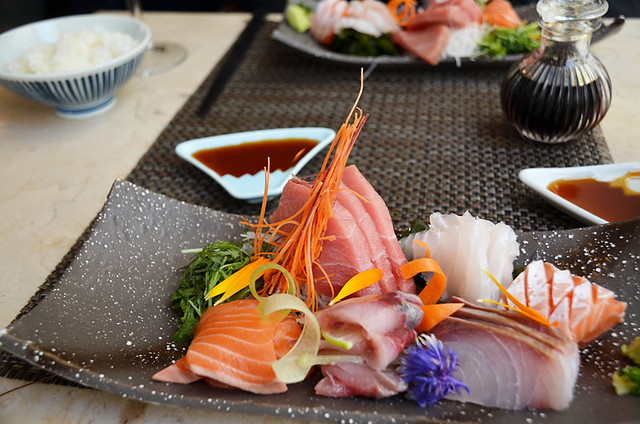
I was particularly disappointed as Lonely Planet was once our travel bible, the key to unlocking exciting new travel experiences. But there was no edgy insight with any of the examples and I was expecting the unexpected.
The idea is an excellent one. For us gastronomy is an integral part of travel. It is especially memorable when it throws a curve ball, or is connected with an experience that could only happen in a particular destination. On our travels it’s rare we don’t find ourselves being deliciously delighted by some local speciality we hadn’t known about previously, or which was presented in a way that was new to us. These are some instances of what I mean.
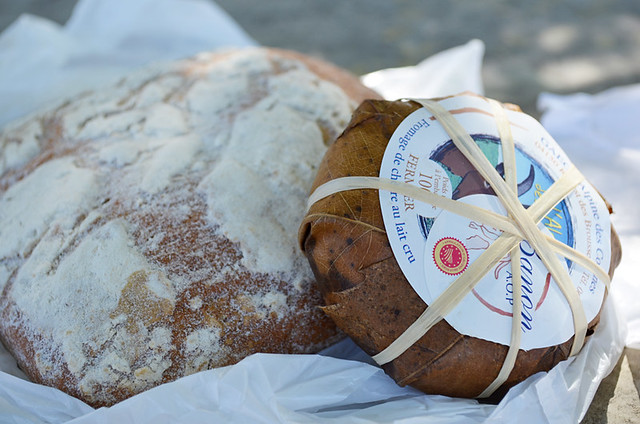
Banon cheese in Provence
We sauntered through Banon’s perfect Provençal streets in search of a shop selling the local fromage, having heard tales of a creamy treasure wrapped in dried chestnut leaves. Our mission was to buy a round of Banon cheese at source. A tiny grocery shop called Super Banon – Fromage de Chevre looked just the place. We’d struck goat’s cheese gold. As well as the speciality clasped in leafy fingers there were mini cheese peaks topped with black olives which were so soft they looked as though you could have eaten them as you would an ice cream. Others were covered in fuzzy, blue mould – not appealing if it were British cheddar, but in France it’s a look which works. We bought a couple of varieties plus a crusty loaf, and absconded to a nearby church where we used an ancient stone slab as a picnic table. By the time we unwrapped the copper leaves, the sun had made the Banon cheese like a fondue. The simple combination of fresh bread and pungent runny cheese was sensational. It tasted of lavender fields and gently rolling hills. It tasted of Provence.

Tricolour risotto in Novara
Risotto in Italy? Not exactly an insight. Maybe not… or maybe so. Novara is a charmer of an Italian city which lies in Milan’s limelight-hugging shadow. It’s also the place where much of the best rice in Italy is grown. It is also where I discovered I actually liked risotto. In a time capsule of a restaurant, Albergo Ristorante Parmigiano, where the waiter was decked out in a waistcoat and Dickie bow and a woman with a racking cough sat in a side room watching reruns of Murder She Wrote, we were given a masterclass in how to make authentic risotto – keep it simple. A plate with three mounds of creamy rice (white, yellow, wine-coloured) and nothing else, apart from a sprinkling of herbs, transformed my feelings about risotto. The flavours from this most basic looking of dishes performed a tarantella around my mouth. It was culinary alchemy and it completely changed the way I viewed a dish which I thought I knew and, until that point, had been indifferent to.
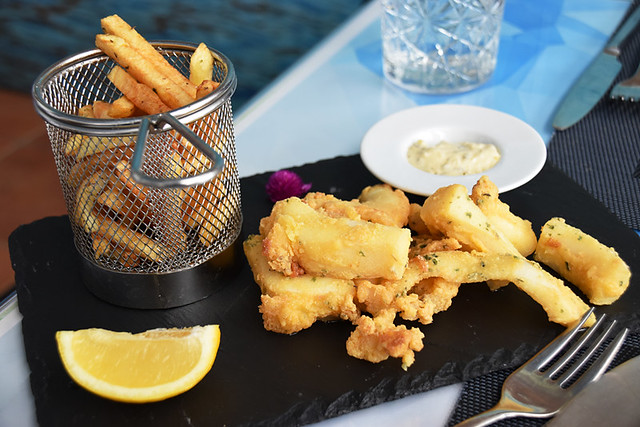
Setúbal’s poetic cuttlefish
I was no stranger to cuttlefish. I’d eaten it many times in the Canary Islands, simply cooked and paired with papas arrugadas, or as creative tapa on a tapas route. I liked it, but it was not something I thought I’d ever develop a yen for. Now I get periodic cravings for choco frito (fried cuttlefish), a speciality in Setúbal. From the first bite in a warehouse of a fish restaurant opposite the town harbour, I realised I was tucking into something worlds removed from its Canarian counterpart. It was golden and crunchy on the outside, tender (within limits) on the inside. In a working class town where many people still use bicycles to get around rather than to emulate Lycra-clad sporting heroes, seafood restaurants are packed with locals getting their choco frito hit. Since that first taste we’ve eaten in huge buildings so full we could hardly hear ourselves think, unassuming fishermen’s restaurants in run-down back streets, and a place on stilts in one of the most stunning beauty spots we’ve seen in Europe. This is an area where the cuttlefish is so revered there’s even a sculpture of one designed to look like the Fernando Pessoa figure outside Cafe a Brasileira in Lisbon.
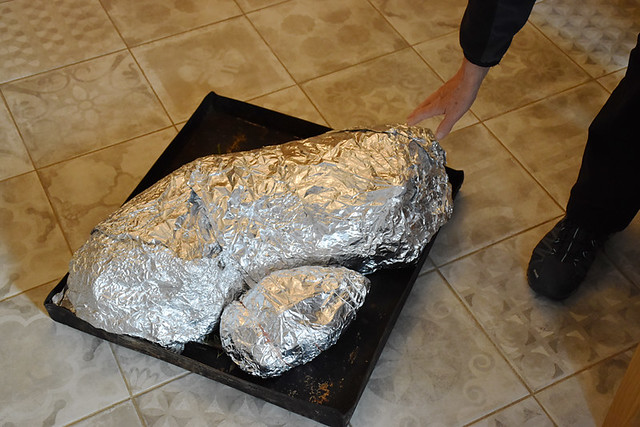
Lamb on Andros
Easter Sunday dinner with a local family on the Greek island of Andros was bookended by taking photographs of the highlight of the meal, a whole lamb. Early morning I was invited into the kitchen to take a picture of the main course. As it was entirely wrapped in aluminium foil it was impossible to identify what it was, but I snapped away enthusiastically anyway so as to not offend. After that it was taken away to be buried in the ground and slow-cooked for a few hours. When it was ‘done’ it was returned to the kitchen and I was invited into the kitchen to snap away once again, this time without the foil (I won’t share a photo as it wasn’t exactly what you’d call photogenic). It was served surrounded by an array of local mezes including industrial-sized bowls of tzatziki. We sat at a long bench in the middle of many generations of family and their friends, none of whom could speak English. It’s at times like this you realise efharisto and yassou are simply not enough to sustain conversation over a three hour dining experience. ‘Mmm’ thankfully works in any language.
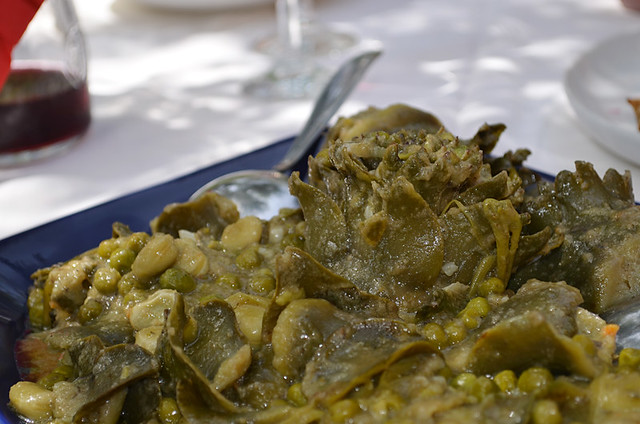
Artichokes and beans on Hvar
A bowl of artichokes and broad beans is not something I would have expected to feature heavily in one of our most endearing gastronomic travel memories, but it does. The other ingredients making up what was an extra-special afternoon helped – the generous hospitality of a local family; two gregarious and painfully honest Hvar men who gave a sobering insight into the Croatia’s troubled recent past; a hidden oasis of a setting; lots of home-brewed booze; and a feast which included dishes I wouldn’t have thought of ordering in a town centre konoba (traditional tavern), including the revelation artichoke and broad bean stew. It was exceptional.
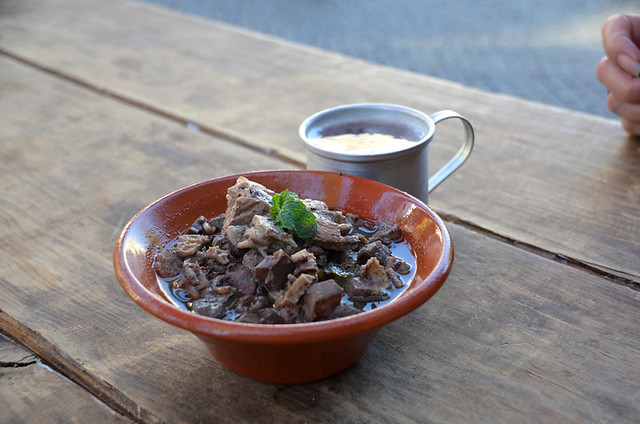
Each of these examples, and numerous others like them, left a deep imprint thanks to various factors. Often the setting played a part, many times the people involved added an extra sprinkling of unique flavour. What links them all was the element of culinary surprise; even when a particular dish might initially have seemed familiar.
We used to buy Lonely Planet because it told us about things we didn’t know. There were no insights at all in its Ultimate Eat List top ten, which is why it was such a disappointing meal.




Be the first to comment